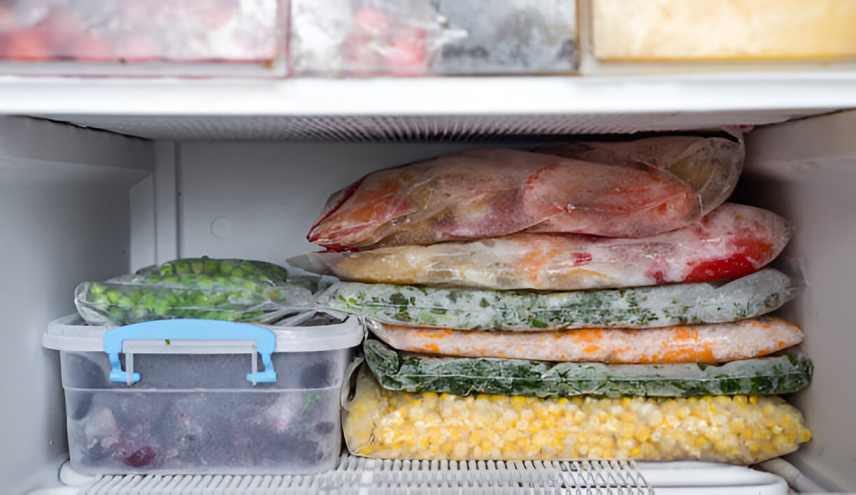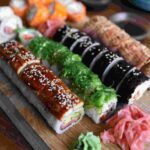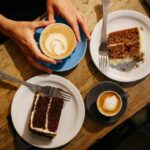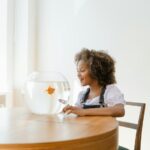Frozen meals offer a range of advantages, particularly for those with busy lifestyles. First and foremost, they save time. With proper planning, you can prepare meals in bulk and freeze them, allowing for quick reheating when needed. This convenience is especially beneficial for families juggling work, school, and extracurricular activities, as it eliminates the daily dilemma of what to cook for dinner. By dedicating a few hours on the weekend to meal prep, you can create a variety of dishes that cater to different tastes and dietary needs, ensuring everyone in the household is satisfied.
Table of Contents
- Essential Tools and Equipment for Cooking Frozen Foods
- Thawing vs Cooking Frozen Meals
- Tips for Perfectly Reheating Frozen Dishes
- Common Mistakes to Avoid When Cooking Frozen Meals
- Flavor Enhancements: Spices and Sauces for Frozen Foods
- Meal Prep Strategies for Freezing Your Own Meals
- Nutritional Considerations: Are Frozen Meals Healthy?
- Creative Ways to Repurpose Leftover Frozen Meals
- Quick and Easy Frozen Meal Recipes to Try Today
- Conclusion
- FAQs
Another significant benefit is the reduction of food waste. By freezing leftovers or surplus ingredients, you can extend their life and prevent spoilage. This approach not only benefits your wallet but also contributes to sustainable cooking practices. In a world where food waste is a growing concern, freezing meals allows you to utilize every ingredient to its fullest potential. For instance, vegetables that are nearing their expiration can be blanched and frozen, preserving their flavor and nutritional value while providing a convenient option for future meals.
Furthermore, cooking frozen meals can also foster creativity in the kitchen. With a well-stocked freezer, you can mix and match various components to create new dishes. For example, leftover roasted chicken can be transformed into a hearty soup or a flavorful stir-fry, while frozen vegetables can be added to a pasta dish for an extra nutritional boost. This versatility encourages home cooks to think outside the box and make the most of what they have on hand, reducing the temptation to order takeout or resort to unhealthy convenience foods.
Essential Tools and Equipment for Cooking Frozen Foods
To effectively cook frozen meals, having the right tools and equipment is essential. Here are some must-haves:
- Freezer-safe containers: Invest in quality containers that prevent freezer burn and maintain food quality.
- Food processor: This tool can help you prepare and portion meals before freezing them.
- Labels and markers: Clearly labeling your meals will prevent confusion and help you track expiration dates.
- Microwave or oven: These appliances are crucial for reheating your frozen dishes safely and efficiently.
- Slow cooker or Instant Pot: Ideal for cooking frozen meals directly from the freezer, offering a no-fuss preparation method.
Having these tools on hand will optimize your experience and streamline the cooking process. Additionally, consider investing in a vacuum sealer, which can significantly extend the shelf life of your frozen foods by removing air and preventing freezer burn. This is particularly useful for bulk cooking sessions, where you can prepare large quantities of meals and portion them out for future use. The convenience of vacuum-sealed bags also allows for easy stacking in your freezer, maximizing space and organization.
Another valuable tool is a digital meat thermometer. When cooking frozen meats, achieving the right internal temperature is crucial for food safety. A digital thermometer ensures that your meals are cooked thoroughly, providing peace of mind and enhancing the overall quality of your dishes. Furthermore, incorporating a good set of kitchen scissors can be a game changer when it comes to opening vacuum-sealed bags or cutting through packaging, making the cooking process even more efficient.
Thawing vs Cooking Frozen Meals
When it comes to cooking frozen meals, understanding the difference between thawing and cooking is crucial. Thawing refers to the process of bringing frozen food to a refrigerator or room temperature. Proper thawing often results in more evenly cooked meals.

On the other hand, cooking frozen meals directly from the freezer is entirely possible. Many meals are designed to be cooked without thawing, such as casseroles, soups, and stews. However, cooking times will generally be longer, so adjustments may be necessary.
Regardless of your approach, it’s essential to follow safety guidelines to avoid any foodborne illnesses caused by improper thawing methods.
Tips for Perfectly Reheating Frozen Dishes
To achieve perfectly reheated frozen dishes, keep the following tips in mind:
- Use appropriate heating methods: Select a method that suits the dish; some meals are best reheated in an oven for crispiness, while others may work better in a microwave.
- Covering dishes: When reheating in an oven or microwave, covering the dish will help retain moisture and prevent drying out.
- Check temperature: Always ensure that the meal reaches an internal temperature of at least 165°F (74°C) to eliminate unsafe bacteria.
- Add moisture: If a dish seems dry, add a splash of broth, water, or sauce before reheating.
Common Mistakes to Avoid When Cooking Frozen Meals
Even experienced cooks can make mistakes when dealing with frozen meals. Here are some common pitfalls to steer clear of:
- Not cooling meals properly before freezing: Ensure that meals are cooled down to room temperature before placing them in the freezer. This prevents ice crystals from forming.
- Overcrowding the freezer: Keep your freezer organized so that air can circulate around frozen items. Overcrowding can lead to longer freezing and reheating times.
- Ignoring expiration dates: Always keep track of how long meals have been in the freezer; most meals are best consumed within 3-6 months.
Flavor Enhancements: Spices and Sauces for Frozen Foods
One of the challenges of cooking frozen meals is ensuring they are flavorful. Here are some ways to enhance taste:
- Add fresh herbs: Fresh herbs like parsley, basil, or cilantro can elevate the flavors of frozen dishes when added during reheating.
- Utilize sauces: Consider incorporating sauces like marinara, soy sauce, or teriyaki to add moisture and flavor.
- Experiment with spices: A dash of chili powder, garlic powder, or cumin can transform an unexciting frozen dish into an exciting meal.
Meal Prep Strategies for Freezing Your Own Meals
Preparing meals for freezing can be straightforward with planning. Here are some strategies you can use:
- Batch cooking: Prepare large quantities of meals and freeze single portions for easy access.
- Choose dishes wisely: Some foods freeze better than others. Soups, stews, and casseroles are great choices for freezing.
- Use portion control: Freeze meals in individual servings to make reheating quick and easy.
Nutritional Considerations: Are Frozen Meals Healthy?
Many people question the nutritional value of frozen meals. While some store-bought frozen options can be high in preservatives and sodium, homemade frozen meals can be incredibly nutritious. By preparing meals at home, you can control the ingredients and maintain a balanced diet.
It’s also important to remember that the freezing process preserves essential nutrients, making frozen fruits and vegetables as healthy as their fresh counterparts.
Creative Ways to Repurpose Leftover Frozen Meals
If you find yourself with leftovers from frozen meals, consider these creative repurposing ideas:

- Transform into a wrap: Use leftover casseroles or meats in wraps with fresh vegetables and your favorite sauces.
- Make a frittata: Leftover frozen vegetables can be combined with eggs to create a hearty frittata.
- Soup it up: Add leftover frozen dishes to a pot of broth for a flavorful and nutritious soup.
Quick and Easy Frozen Meal Recipes to Try Today
If you’re looking to get started with frozen meals, here are a few recipes to consider:
- Vegetable Stir-Fry: Sauté your choice of frozen vegetables with soy sauce and garlic for a quick side dish.
- Taco Casserole: Layer corn tortillas, frozen taco meat, and cheese in a baking dish, then freeze for later.
- Chicken Soup: Combine frozen chicken, vegetables, and broth in a pot; let simmer for a comforting meal.
Conclusion
Cooking frozen meals can significantly ease your daily routine while still providing delicious and nutritious options. By understanding the benefits, proper techniques, and creative possibilities, you’ll become a pro at handling frozen foods.
FAQs
While many meals freeze well, some ingredients like potatoes may become mushy and not optimal when reheated. It’s best to research recipes specifically designed for freezing.
Most meals can last in the freezer for 3-6 months, but it’s crucial to label and date your containers to keep track.
Generally, it is safe to refreeze thawed meals if they were thawed in the refrigerator and not left out at room temperature for more than two hours.
Yes, you can cook frozen ready meals in an air fryer, but cooking times and temperatures may vary.







